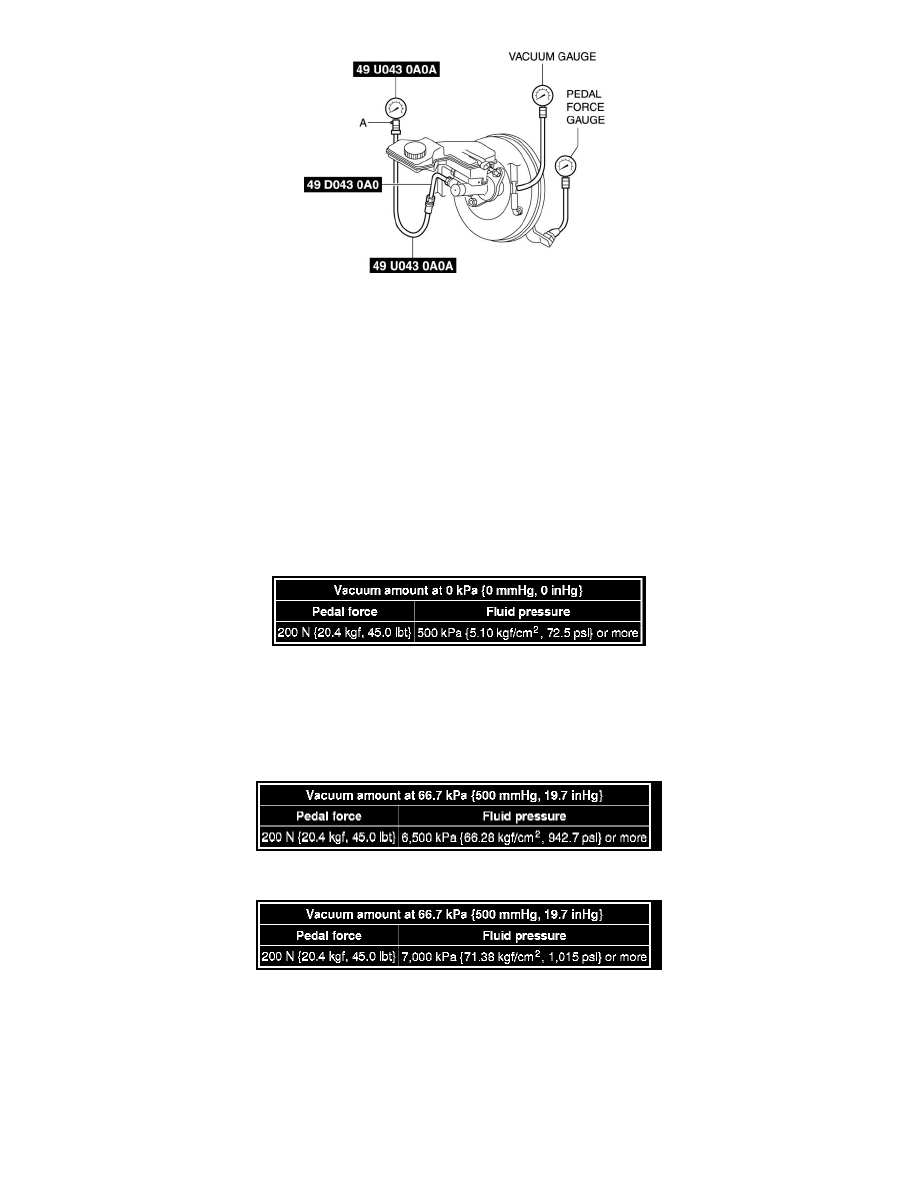3 L4-2.5L (2010)

Checking for vacuum loss (loaded condition)
1. Start the engine.
2. Depress the brake pedal with a force of 200 N {20.4 kgf, 45.0 lbf}.
3. Stop the engine when the vacuum gauge reading reaches 68 kPa {510 mmHg, 20 inHg} with the brake pedal depressed.
4. Measure the amount of vacuum decrease for 15 s immediately after stopping the engine.
5. If the amount of vacuum decrease is 3.3 kPa {25 mmHg, 0.97 inHg} or less, the power brake unit is normal.
Lack of hydraulic pressure inspection
1. If the pedal force and fluid pressure correlation is within the specification with the engine stopped and a vacuum amount of 0 kPa {0 mmHg, 0
inHg}, the system is normal. Master cylinder fluid pressure
Hydraulic pressure inspection
1. Start the engine. Depress the brake pedal when the vacuum reaches 66.7 kPa {500 mmHg, 19.7 inHg}.
2. At this time, apply the indicated pedal force and if the fluid pressure is within the specification, the unit is normal. Master cylinder fluid pressure
(LF, L5)
Master cylinder fluid pressure (L3 WITH TC)
